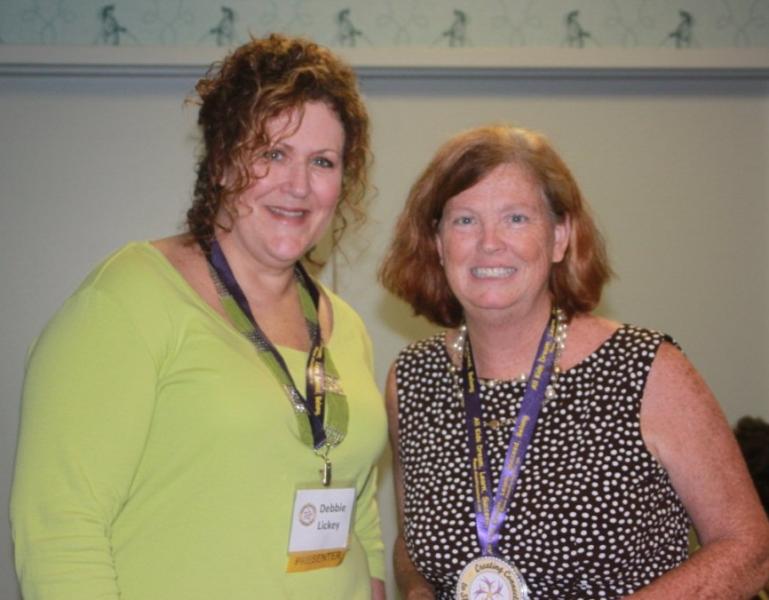
by Debbie Lickey and Deana Buck
Debbie Lickey and Deana Buck from the Virginia Paraprofessional Early Childhood Project share how they worked with community college faculty to embed CONNECT Modules into several courses in the program of studies.
The Virginia Paraprofessional Early Childhood Project at Virginia Commonwealth University (VCU)’s Partnership for People with Disabilities, is one of the newly funded Office of Special Education (OSEP) funded personnel preparation projects for paraprofessionals. We are working collaboratively with targeted community colleges in Virginia that offer Applied Associate’s Degrees in Early Childhood in order to modify existing core early childhood courses. Our goal is to find evidence-based resources that would enrich students’ experiences and provide strategies and tools for students to successfully teach and care for a diverse group of young children. One of the most valuable resources we explored were the CONNECT modules. The modules complement existing courses and provided strategies for faculty members’ to encourage the consideration of diverse groups of children in early childhood teaching practices.
For the introductory course, ‘Introduction to Early Childhood’, we incorporated the Connect Video: ‘Foundations of Inclusion Birth to Five’ from Module One to address the overall goal of creating a sense of inclusion as a natural part of the early childhood experience. We designed an interactive reflective activity for the students to complete that included questions such as: a. How would you feel if you had been Jay’s parents and your son had been excluded from attending school? b. Explain the desired results of early childhood inclusion. What is meant by access? participation? supports? c. How do you react to the finding that children with disabilities make adequate progress in language and cognitive development in inclusive settings compared to self-contained settings? What benefits do you think typical children gain from inclusive settings? d. How would you explain the definition of inclusion to a friend? We have worked closely with faculty members during this process.
One faculty member remarked “The video sparked a lot of conversation about inclusion in general as students related stories of their own experiences with family or friends with disabilities. Another faculty member shared that “The video allowed the students to ‘experience’ the content rather than just read about it.”
Module Four: Family-Professional Relationships was integrated into the family partnership course: ‘Early ‘Childhood Programs, Schools, and Social Change’ to enhance existing course curriculum regarding family relationships. We used the videos, from the parent and teacher viewpoints (Videos 4.1 and 4.2), and the accompanying activity (4.1a) and handout (4.3a). The video in this module was especially powerful for students who were currently working, as they re-framed a teacher/parent challenge through the lens of the parent. Within the same course, Module Two: Transition, provided a more extensive consideration of transition and its value as part of the early childhood teaching experience. The video ‘Effective Transition Practices’ was used to introduce the concept of transitioning. Videos 2.1 and 2.2 provided the students with an opportunity to discuss their own concerns about setting up an environment for children with physical limitations and provided them with an opportunity to reflect on the parent’s point of view. Students were provided a sample transition profile (Handout 2.1 blank and 2.2 completed) and used Handout 2.3a to aid them in creating a Transition Profile for Tamiya, including supports that Tamiya might need to make a smooth transition into preschool. Using Handout 2-6, students complete the Observation Guide For Initial Class Visit, and compare ideas with others to determine what teachers need to consider in setting up an appropriate environment for all children.
Module 5: Assistive Technology was used both in the Introduction to Exceptional Children class and as a catalyst for problem solving in the course Advanced Observation and Participation, which includes a practicum experience. We used a scenario to describe a student with disabilities, challenging students to access resources related to including children with disabilities. Students use these resources to create adaptations and modifications for the classroom environment and their teaching practice within their practicum experience.
Community Questions
- How have you incorporated the CONNECT modules in early childhood courses?
- How might the CONNECT modules be used for community professional development in child care and preschool settings within your own communities?
About the Authors:
Debbie Lickey M.Ed. is the Project Coordinator of the Virginia Paraprofessional Early Childhood Learning Project at Virginia Commonwealth University (VCU). Debbie is the co-author of the book, ‘Starting with Their Strengths: Using the Project Approach in Early Childhood Special Education(2011, TCP)and has been working in the early childhood field for the last 25 years in various roles; as an early childhood teacher, an early childhood special education teacher, and a developmental consultant.
Deana McGuire Buck is the Program Group Leader in Education/Early Childhood at the Partnership for People with Disabilities at VCU. Deana has extensive experience in early intervention and professional development. She works closely with Virginia’s early childhood systems to develop cross-sector professional development.She currently serves as the Principal Investigator for five projects and initiatives, including a federally funded OSEP personnel preparation project for paraprofessionals. She was recently selected by the Centers for Disease Control and Prevention to serve as Virginia’s Autism Ambassador for the “Learn the Signs: Act Early” campaign.

